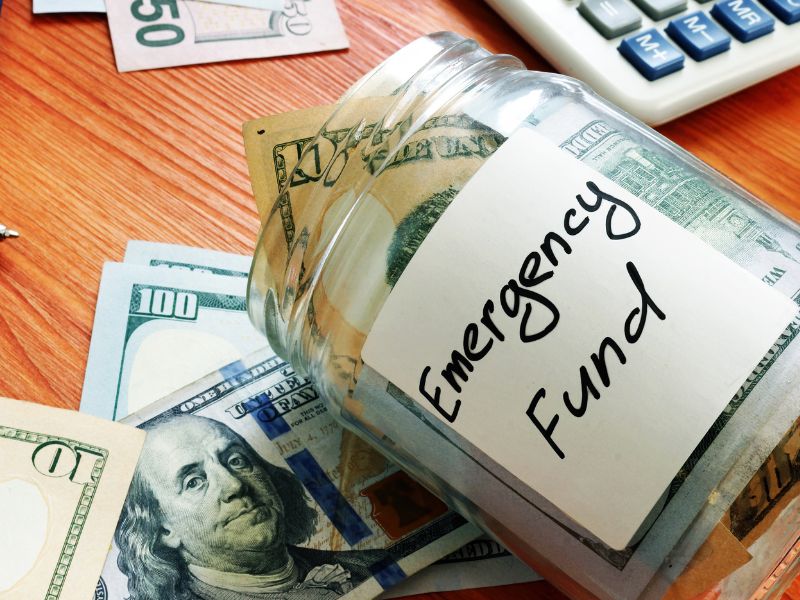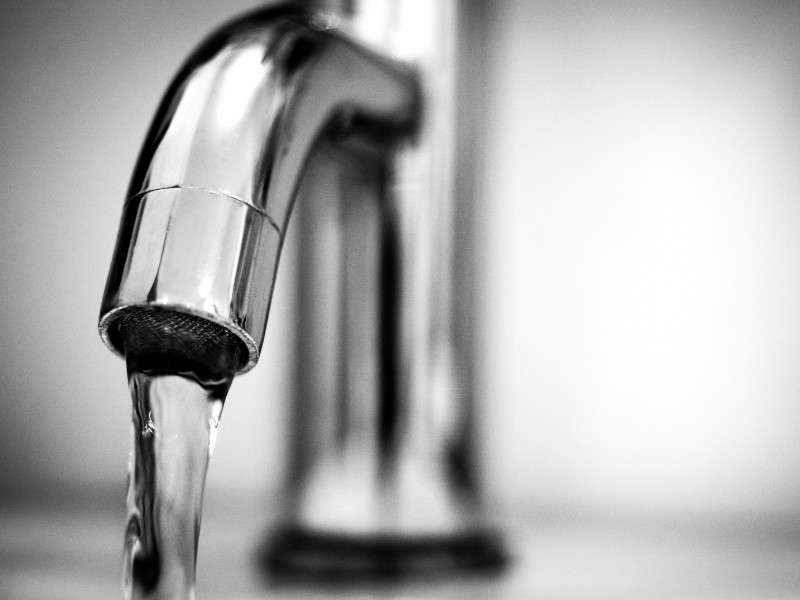How to Successfully Build an Emergency Fund

This post may contain affiliate links. At no cost to you, we earn a commission from qualifying purchases.
It’s no fun to think about emergencies. You know, those unexpected life events like a job loss, medical expense, or sudden home repair. But that’s precisely why having an emergency fund is so essential. Think of it as a financial safety net that gives you peace of mind and cushions the blow of unforeseen expenses.
Instead of digging into your savings for long-term goals like a house or holiday, or even worse, relying on credit cards, an emergency fund allows you to handle life’s curveballs with financial ease.
Why not use credit to pay for emergencies?
Using credit to pay for emergencies can seem like a quick solution, but there are several reasons why it’s not always the best choice:
- Interest Costs: When you use credit, especially credit cards, you often have to pay interest on the amount you borrow. This means you end up paying more for the emergency over time.
- Debt Accumulation: Relying on credit can lead to accumulating debt, which can become difficult to manage, especially if you face multiple emergencies or if your financial situation changes.
- Uncertain Repayment: It’s important to remember that credit needs to be paid back. If you’re unable to repay what you borrowed promptly, it can lead to a cycle of debt and financial stress.
- Impact on Credit Score: Using credit excessively or missing payments can negatively impact your credit score, which can affect your ability to get favourable loan terms in the future.
- Lack of Financial Security: Depending solely on credit for emergencies can leave you vulnerable if your credit limits are reached or if you encounter a situation where credit isn’t accepted.
- Long-Term Financial Health: Relying on credit may hinder your ability to save for future goals, such as retirement or other big purchases, as you’ll be using your available funds to pay off debt instead.
By building an emergency fund with your own savings, you can avoid the pitfalls of relying on credit and have peace of mind knowing you’re prepared for unexpected expenses without going into debt.
How much money do you need in an emergency fund?
Financial advisors usually recommend an emergency fund sufficient to cover three to six months of living expenses. However, this is a general rule of thumb, and your specific circumstances might require a different amount.
If you’re in a stable job and have other safety nets, you might get away with less. But if you’re self-employed or in an industry with frequent layoffs, aim for a more substantial cushion.

Where and how to start building your emergency fund
Starting an emergency fund can feel overwhelming, especially if you’re new to saving. But fret not; it’s more straightforward than it seems.
Step 1: Assess your expenses
Understanding your monthly living expenses is the initial and crucial step in building an emergency fund. This process involves identifying and documenting all the essential costs you incur regularly to sustain your lifestyle.
- Track Your Spending: Begin by keeping track of your expenditures over a typical month. Note down every expense, whether it’s a fixed cost like rent or variable expenses like groceries and entertainment.
- List Essential Expenses: Categorize your expenses into essential and non-essential categories. Essential expenses are those necessary for your basic needs and survival, such as rent or mortgage payments, utilities, groceries, transportation, insurance premiums, and healthcare costs.
- Consider Variable Expenses: Factor in variable expenses that may fluctuate from month to month, such as utility bills or groceries. Look at past statements or receipts to estimate these amounts accurately.
- Include Debt Payments: Don’t forget to include any monthly debt obligations, such as credit card payments, loan instalments, or other outstanding debts.
- Anticipate Unforeseen Costs: While it’s impossible to predict every emergency expense, consider potential scenarios like car repairs, medical emergencies, or home maintenance issues that could arise unexpectedly.
- Be Realistic: Be honest and realistic about your spending habits. Don’t underestimate expenses or leave out certain categories to make the numbers look better. The goal is to create an accurate picture of your financial obligations.
By thoroughly assessing your expenses, you gain clarity on your financial commitments and can determine how much you need to set aside in your emergency fund to cover unforeseen costs without disrupting your financial stability.
This awareness forms the foundation for effective budgeting and saving strategies moving forward.
Step 2: Set a realistic savings target
Setting a realistic target for your emergency fund involves several key steps. First, calculate the total amount you need to cover your living expenses for a specific period during emergencies. This calculation requires multiplying your monthly expenses by the number of months you want to cover.
For instance, if your monthly expenses amount to £1000 and you aim to cover three months’ worth of expenses, your total emergency fund target would be £3000 (1000 x 3).
Next, consider your current financial situation carefully. Evaluate how much you can realistically set aside for your emergency fund each month, taking into account your income, expenses, and any other financial obligations.
It’s crucial to strike a balance between setting a target that adequately covers your needs and one that is achievable based on your financial resources.
Starting small can be a wise approach, especially if you’re new to saving. Setting a smaller, more attainable goal can serve as a stepping stone towards larger objectives and help you establish a consistent saving habit without feeling overwhelmed.
Break down your total emergency fund target into smaller, incremental goals. For example, if your ultimate goal is £3000, you could aim to save £500 in the first month and gradually increase the amount as you progress.
Be flexible with your savings target and be prepared to adjust it if your circumstances change. If you experience significant changes in income or expenses, reassess your emergency fund target accordingly. Celebrate your progress along the way by acknowledging the milestones you achieve.
Recognizing your achievements can help keep you motivated and committed to your savings goals.
Step 3: Choose the best account to save your money
Choosing where to keep your emergency money is really important. It’s best to have a special account just for emergencies, separate from your regular savings or checking accounts. You want to be able to get to your money easily without any extra charges or complicated rules.
Here’s why it matters:
- Keep Things Clear: When your emergency money is in its own account, it’s easier to know what’s set aside for emergencies and what’s for other stuff, like saving for fun things or paying bills.
- Easy to Get to: Look for an account where you can take out money quickly if something unexpected happens. Find accounts that let you withdraw money without making you wait or charging you extra fees.
- Stay Safe and Secure: Make sure the account you choose keeps your money safe. Pick accounts that are backed by the government’s insurance, so even if something happens to the bank, your money is protected.
- Grow Your Money a Bit: It’s good if your emergency account earns some extra money over time. Choose accounts that give you a little bit of interest, even if it’s not a lot. It helps your emergency money grow slowly.
- Easy to Manage: Pick an account that’s easy to check and use online. That way, you can see how much money you have in your emergency fund anytime, anywhere.
- Avoid Spending It: Try to find an account that doesn’t give you easy ways to spend your emergency money on non-emergencies. Avoid accounts with cards or checks linked to them, so you’re not tempted to use the money for other things.
By choosing the right account for your emergency fund, you can make sure it’s there when you need it, while also making a little extra money on the side. Keep an eye on your account and change it if you need to, based on what works best for you.
Step 4: Regularly contribute to your emergency fund
Consistently contributing to your emergency fund, regardless of the amount, is a cornerstone of financial security. It’s about establishing a routine of setting aside money regularly to ensure you’re prepared for unexpected expenses. This consistent effort, even if it seems small at first, can yield significant benefits over time.
By committing to regular contributions, you’re not only building up your emergency fund but also cultivating discipline in managing your finances. This discipline extends beyond saving money; it reinforces the importance of financial planning and responsible money management in your overall financial well-being.
Step 5: Reassess and adjust your circumstances
As life evolves, so do your financial circumstances. Perhaps you’ve relocated to an area with a higher cost of living, or maybe you’ve experienced changes in your employment status, such as transitioning to a more stable job or starting a new career path.
These life changes can impact your financial needs and the amount of money you should have set aside for emergencies.
Reassessing your emergency fund ensures that you remain prepared for unexpected expenses or financial challenges that may arise. By regularly evaluating your financial situation, you can identify any gaps in your emergency savings and take proactive steps to address them.
Time to get started
There’s a strong opinion that having an emergency fund isn’t just a good idea; it’s a necessity. It’s a non-negotiable aspect of sound financial planning. So, what are you waiting for? Start today, and you’ll be grateful you did when life throws you one of those inevitable curveballs.
Featured image by designer491 via Canva.com





